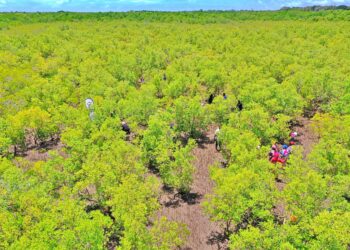China changes and the global fish sector redefines itself – There is a widening gap at the heart of the world’s largest fish market, and it is not just a question of numbers. It is a structural, profound change that touches China’s economic belly and is reflected throughout the global seafood supply chain. According to Rabobank estimates, by 2030 China could have a $10 billion fish trade deficit. For a country that has been among the world’s leading fish exporters for decades, this is a reversal that leaves its mark.
The causes of this imbalance are many, but are mainly intertwined with two epochal forces: demographic transformation and the redefinition of geopolitical balances. Two seemingly distant phenomena that, combined, put the production engine of a key sector in crisis.
On the demographic front, the numbers speak for themselves. In the 1960s, every Chinese woman gave birth to an average of six children. Today, the birth rate has plummeted to 1.09. This translates into a progressively ageing population: the average age will rise from 29 in 2000 to 52 in 2050. And the over-60 group will reach 510 million people, the equivalent of the entire population of Europe and the United Kingdom.
This dynamic will drastically reduce the available labour force, especially in rural areas where fishing and aquaculture activities have historically been concentrated. Galloping urbanisation – there will be 550 million to 1.1 billion inhabitants in cities by 2050 – exacerbates the situation, creating an operational vacuum in the countryside and coastal production districts.
Meanwhile, however, seafood consumption continues to rise. The urban population has healthier tastes, and fish is increasingly in demand. The current main sources – capture fisheries, carp and shellfish farming – still generate over 50 million tonnes per year, but their potential is dwindling. Depletion of resources and chronic labour shortages are holding back production.
The farming of high-value fish species could be an alternative, but here, too, limitations are emerging. Constant reliance on ingredients such as fishmeal and soybean for animal feed puts a ceiling on sustainable growth in the industry.
This is why China is preparing to absorb more and more fish from abroad, transforming its historical role from producer to net importer. This change, however, requires a revision of the trade map. Of the top ten seafood suppliers, only Russia is aligned with the Chinese geopolitical axis. The other strategic partners – the United States in the lead – are now complex, if not openly hostile interlocutors.
In response to this vulnerability, Beijing is rewriting its trade pacts, pushing the South-South axis. Imports from South-East Asia, Africa and Latin America are increasing. Countries such as India, Vietnam, Ecuador and Indonesia are at the centre of a new pattern of influence, combining economics and geopolitical strategy.
In the current decade, the battle for fish will be much more than a matter of supply. It will be a crucial juncture in understanding who will lead the global value chain, between who produces, who consumes and who dictates the rules. And with China forced to look outside for what it previously dominated at home, new challenges and opportunities are opening up for the global seafood industry.
China changes and the global fishing industry redefines itself







